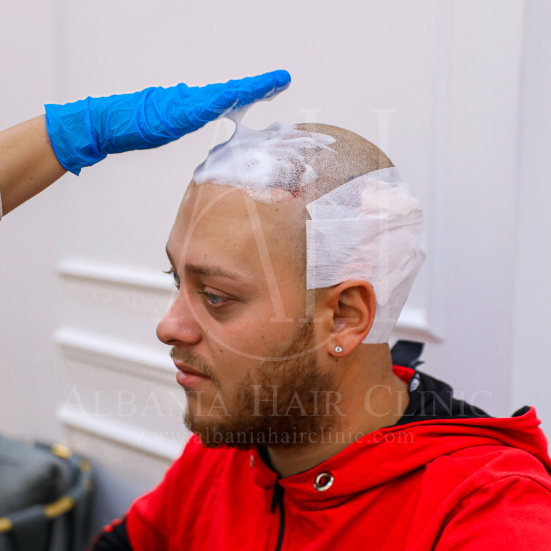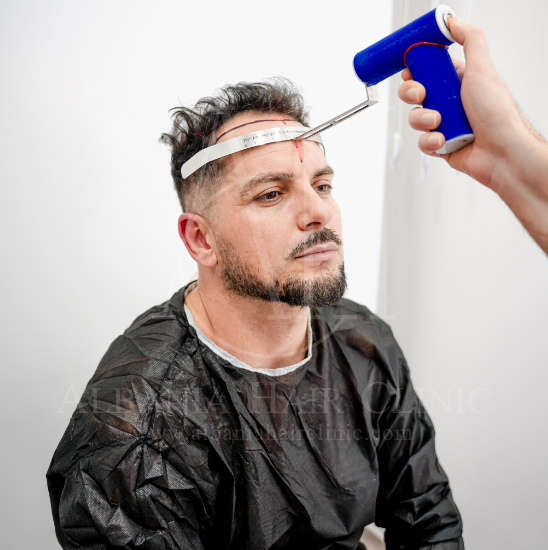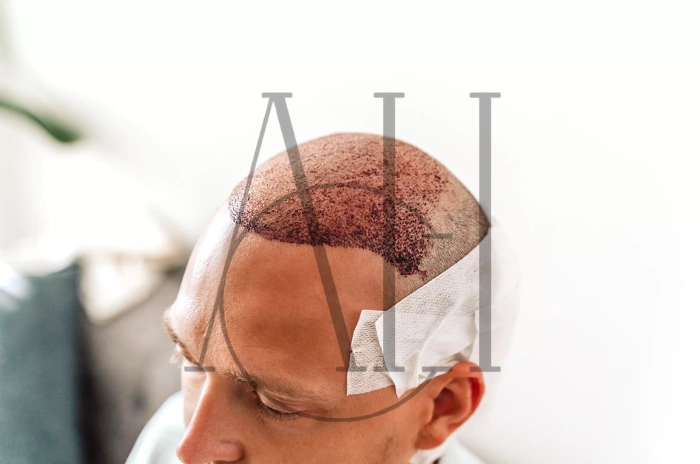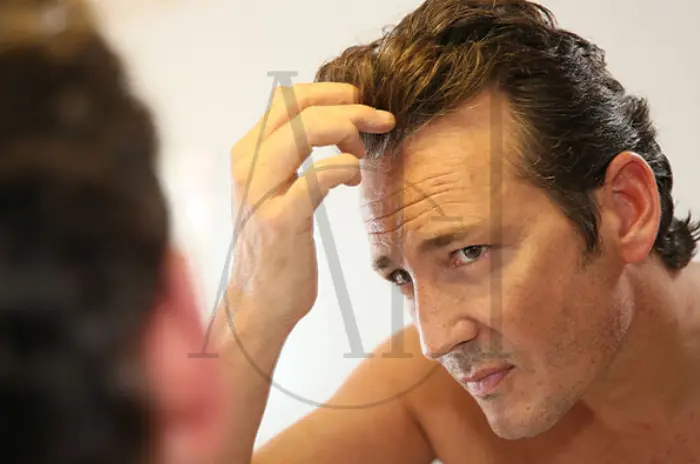After a hair transplant, your scalp is very sensitive and needs time to heal. One of the biggest risks during this healing time is sun exposure. Sunlight, especially UV rays, can cause damage to your skin and harm the new hair grafts. In this blog, you will learn why it is important to avoid the sun, how long to stay protected, and tips to keep your scalp safe after your surgery. Following the right sun care steps can improve your hair growth and protect your final results.
Table of Contents
ToggleHow Does Sun Affect Hair Transplant?
UV Rays and New Grafts
Sunlight has UV rays that can damage the skin. After a hair transplant, the scalp is healing and open to harm. UV rays can cause redness, dryness, and even slow down healing. The grafts are not strong yet, and they need a calm, protected environment to grow properly.
Sun Exposure Can Lead to Poor Results
If the new hair grafts get damaged by the sun, they may not grow properly. This can lead to patchy or weak hair growth, making the results look unnatural. Overexposure to the sun in the early stages can cause permanent harm to the hair follicles.
Can Heat Damage Hair Transplant?
Heat and Sweat
Hot weather can cause sweating, which may irritate your healing scalp. Sweat also increases the risk of infection and makes you uncomfortable. The salt in sweat can also dry out the scalp, slowing the healing process.
Keep Cool When Possible
Try to stay indoors during hot hours of the day. Use fans or air conditioning when available, and avoid heavy exercise that causes overheating. If you must go outside, do so in the early morning or late evening when temperatures are lower.
Can Sunburn Ruin My Hair Transplant?
Yes, It Can
Getting sunburn on your scalp after a hair transplant is dangerous. Sunburn can damage the skin and the new hair roots. This may stop the new hair from growing well. It can also cause discomfort, peeling, and even infection.
Healing Takes Longer
A sunburned scalp can become red, itchy, and painful. It may slow down the healing and make the final results worse. You may also need more time off from your normal routine if the skin is damaged.
How Long Should I Avoid the Sun After a Hair Transplant?
First Two Weeks Are Critical
You should avoid direct sun for at least 2 weeks after your surgery. During this time, the grafts are very sensitive and need protection. Any exposure during this time can lead to poor growth or scalp damage.
Up to Three Months for Full Safety
Most doctors recommend staying out of strong sun for up to 3 months. If you need to go out, always wear protection. This long-term care gives your hair the best chance to grow thick and healthy.
Albania Hair Clinic – Trapianto Capelli in Albania (@albaniahairclinic)’in paylaştığı bir gönderi
How Can I Prevent Sunburn After the Operation?
Use a Hat or Cap
Wearing a loose, soft hat can protect your scalp from direct sunlight. Make sure the hat does not touch the grafts in the first few weeks. Choose breathable materials like cotton to avoid overheating.
Stay in the Shade
Try to stay indoors or in shaded areas during the hottest hours, especially from 10 AM to 4 PM. This lowers the risk of UV damage. If you’re outdoors, use an umbrella or stay under trees or buildings that offer cover.
Protecting Your Hair Transplant
Avoid Harsh Products
Do not use any sprays or sunscreens on your scalp unless your doctor says it is okay. Some products have strong chemicals that can irritate your skin. Only use doctor-recommended products during the healing time.
Keep Your Scalp Cool and Dry
Heat and sweat can harm the healing scalp. Try to wear light clothes and avoid long walks under the sun. Keeping the area dry helps prevent bacteria growth and protects the grafts.
Sun Exposure After Hair Transplant
Avoid Direct Sunlight
Do not expose your scalp to direct sunlight, especially in the first few weeks. Even cloudy days can still have harmful UV rays. Always plan your outdoor activities with sun protection in mind.
Use Umbrellas or Hats
When going outside, use an umbrella or soft hat. Do not use tight caps or helmets in the first month. Make sure the hat is clean and not too hot for the weather.
Why Should You Avoid Sun Exposure After Hair Transplant?
Skin is More Sensitive
After surgery, your scalp is more sensitive than usual. Sun exposure can cause pain, burning, and poor healing. The skin is still recovering and cannot protect itself well.
Grafts Can Be Damaged
The newly placed grafts are not strong yet. Sunlight can stop them from growing properly, which affects your final hair result. Protecting them during the early stages is very important.
Avoiding Sun After Hair Transplant
Make a Plan
If you live in a sunny place or travel to a hot country like Turkey, plan your outdoor time carefully. Avoid sightseeing or beach trips right after surgery. Choose indoor activities during recovery.
Talk to Your Doctor
Always ask your doctor how to protect your scalp. They can suggest safe methods or products for your situation. Personalized advice is the best way to stay safe.

How Long Should You Avoid Hair Transplant Sun Exposure?
At Least 2 Weeks
Stay out of the sun for a minimum of 14 days. This gives the skin and grafts time to start healing. Avoid all direct sun during this time.
1 to 3 Months for Best Results
If possible, avoid strong sun for up to 3 months. This helps ensure the best hair growth and protects your skin. Long-term care makes a big difference.
Can Sun Damage Hair Transplant?
Yes, It Can
Sunlight can harm the healing scalp and damage the new grafts. This can lead to poor results or failed transplants. It can also cause irritation, redness, and peeling of the scalp.
Always Protect Your Scalp
Use shade, hats, or scarves to keep the sun off your head. This is a simple way to keep your results safe. Always be careful when going outside.
How Can You Protect Your Scalp From Sun Damage After Hair Transplant?
Choose the Right Hat
Wear a soft, breathable hat that does not press on your scalp. Avoid hard caps or helmets early on. Comfort and safety are key when choosing a hat.
Avoid Midday Sun
The sun is strongest between 10 AM and 4 PM. Try to stay indoors during these hours to lower your risk. If you must go outside, stay in the shade.
How to Recognize Sun Damage on a Hair Transplant?
Signs to Watch For
-
Redness or burning on the scalp
-
Itchy or peeling skin
-
Pain or swelling
-
Poor hair growth in the treated area These signs mean your scalp may be damaged by the sun and needs care.
What to Do
If you think you have sun damage, call your clinic right away. They can check your scalp and give the right care. Do not wait too long, as early help can prevent worse problems.
Why Do I Have to Avoid Sun Exposure After a Hair Transplant in Turkey?
Turkey Has Strong Sunlight
If you have your surgery in Turkey, be extra careful. The sun can be very strong, especially in summer. Even short walks outside can cause damage.
Tourists Often Stay Outside
Many people want to enjoy the beach or explore cities after surgery, but this can harm your scalp. It is better to rest indoors for a few days. You can enjoy sightseeing after your healing is complete.
The Duration to Avoid Sun Exposure After a Hair Transplant in Turkey
General Rule
Avoid sun for at least 2 weeks, even if the weather feels cool. Strong UV rays can still cause damage. Use shade and cover up when outside.
Extend if Needed
Your doctor may tell you to avoid sun longer, depending on your healing speed. Listen to their advice. Everyone’s skin heals differently.

The Dangers of UV Rays for Post-Operative Skin
Slower Healing
UV rays can delay the healing process, making the skin more sensitive and dry. This can affect how well the hair grows in the future.
Infection Risk
Sunburn can break the skin and cause infection. This is very risky for freshly treated areas. Protecting your scalp is important for good health.
Why is the Skin More Sensitive After a Hair Transplant?
Open Wounds
Your scalp has small wounds from the surgery. These need time to close and heal. Until then, they are at high risk from the sun.
More Fragile Than Usual
New skin is soft and thin, making it more likely to burn or react badly to sun exposure. Always use care and protection.
How Do You Protect Yourself From the Sun After a Transplant?
Best Tips
-
Wear a hat or use an umbrella
-
Stay in the shade
-
Avoid peak sun hours
-
Keep your scalp cool and clean These simple tips can help you avoid sun damage and support healing.
Ask Before Using Products
Some people want to use sunscreen, but not all are safe. Ask your doctor before applying anything to your scalp. It is better to be safe and follow expert advice.
Skin Sensitivity After Surgery
Be Gentle
Your skin will be more sensitive than usual. Do not scratch, rub, or press on the area. Treat your scalp with care.
Watch for Signs
If your scalp becomes red, hot, or painful, talk to your doctor. These may be signs of damage or infection. Quick action can help prevent more problems.
Avoiding sun after a hair transplant is very important. It helps protect the new grafts and makes healing faster and safer. Wear a hat, stay indoors during hot hours, and always follow your doctor’s advice. With the right care, you can enjoy strong, healthy, and natural-looking hair for years to come. Being careful in the early weeks brings the best long-term results.
Frequently Asked Questions
How long should I avoid the sun after a hair transplant?
You should avoid direct sun for at least 2 weeks. For the best results, try to stay protected from strong sunlight for up to 3 months.
Can sunburn damage my hair transplant?
Yes, sunburn can harm your scalp and new grafts, which may slow healing and affect hair growth.
Is it safe to wear a hat after a hair transplant?
Yes, but only a loose and soft hat. Avoid tight caps or helmets, especially in the first 7–10 days.
Why is my scalp more sensitive after a hair transplant?
After surgery, your scalp has tiny wounds and is healing. This makes it more sensitive to sunlight, heat, and irritation.
How can I protect my scalp from sun damage?
Stay in the shade, wear a soft hat, avoid midday sun, and ask your doctor before using any sunscreen or spray.




